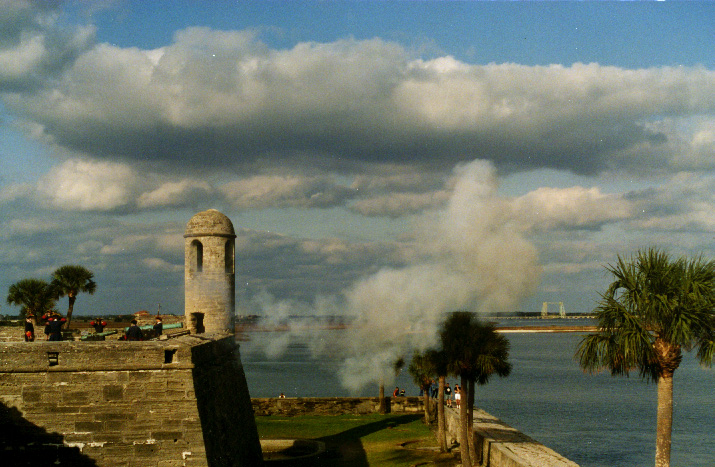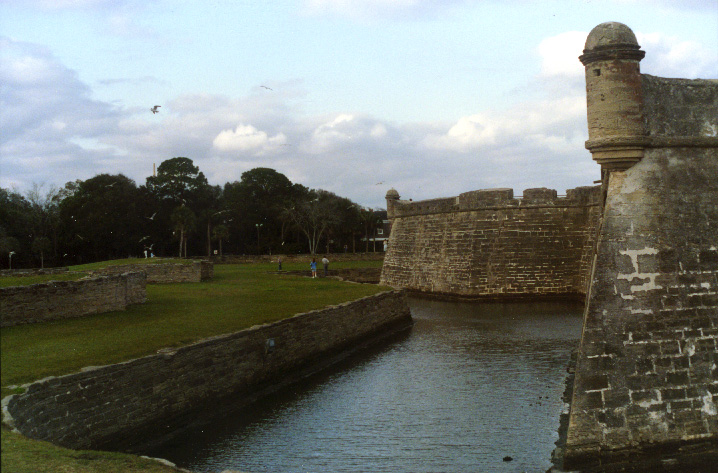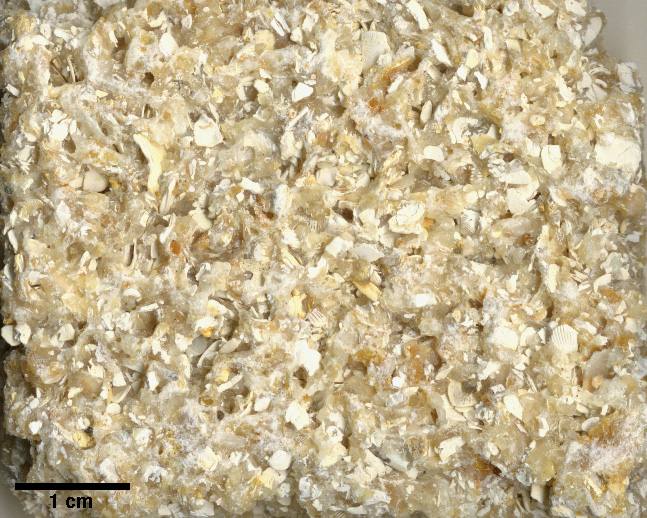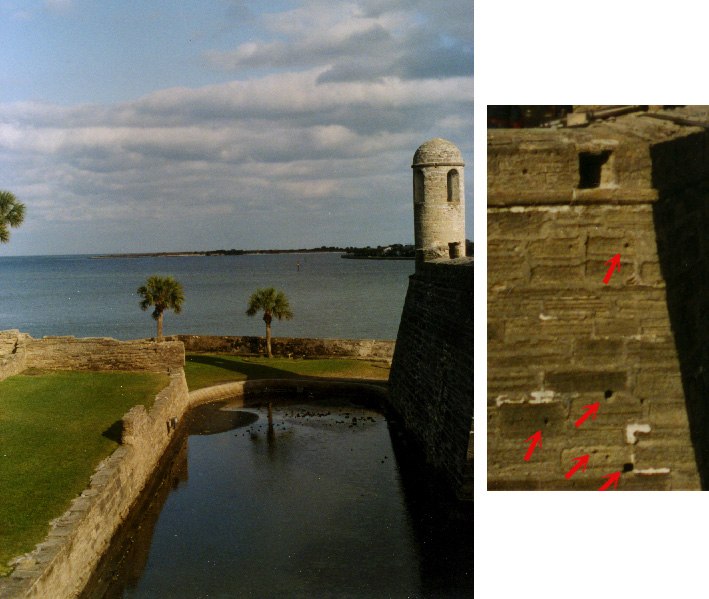|
St. Augustine, Florida, holds the distinction of being the first permanent European settlement in the continental United States. Castillo de San Marcos, or Fort San Marcos, was built in 1695 by the Spanish colonial government to protect St. Augustine. It followed a series of wooden forts that had been built in response to French and then British pressure on Spain's hold on Florida. It withstood British sieges in 1702 and 1740, but it was turned over to the British after the Seven Years war in trade for Havana, which the British had captured. It was returned to Spain after the American revolution and came under U.S. control in 1821.
Castillo de San Marcos was built of coquina, a limestone consisting almost entirely of shelly fossils. Most more ancient limestones consist of fossils or other carbonate grains held tight by hardened matrix or by crystals of calcite cement chemically precipitated between the grains. Coquina has no such matrix and only a little cement, and so it consists of shells with empty space between them. The result is a light porous rock with a texture like that of a granola bar (see the ~3x image below). The stone was quarried on nearby Anastasia Island.
|
|
Given its light and porous nature, coquina would seem to be a lousy building material for a fort. The Spanish probably used it solely because it was the only material resembling stone on Florida's sandy coast. However, coquina's porosity turned out to make it an ideal material for the walls of the fort. Cannon balls failed to shatter the coquina and instead were absorbed into the rock, much as jabbing a tool into styrofoam results in holes but not in breakage of the styrofoam (see the image at right below, which is an enlargement from the top image). In a spirit akin to "bend like a willow rather than break like an oak", the coquina walls absorbed projectiles rather than deflecting them, providing a surprisingly long-lived fortress that survived numerous attacks. Today, at an age of over 300 years, it is North America's oldest masonry fort, junior only to the remains of earthwork Native American structures.
|



